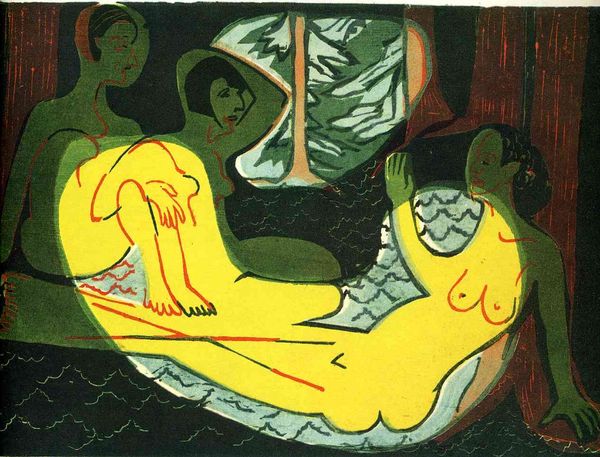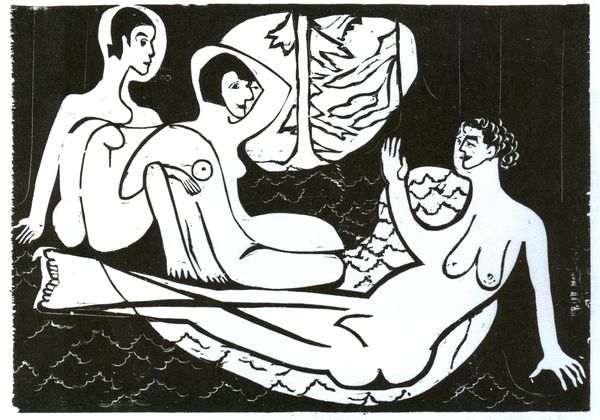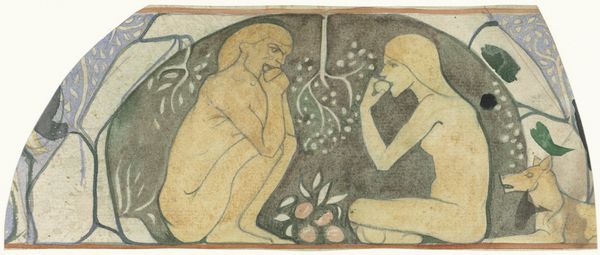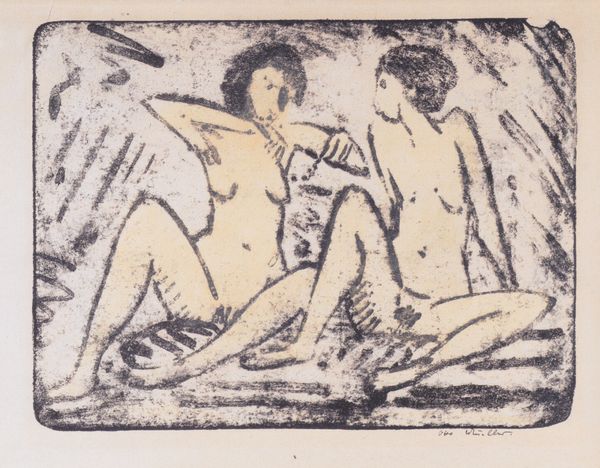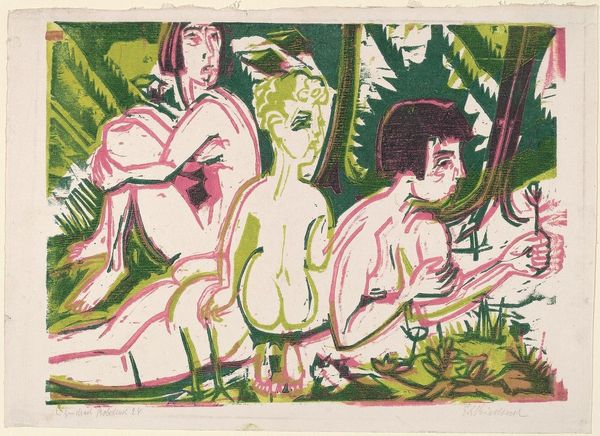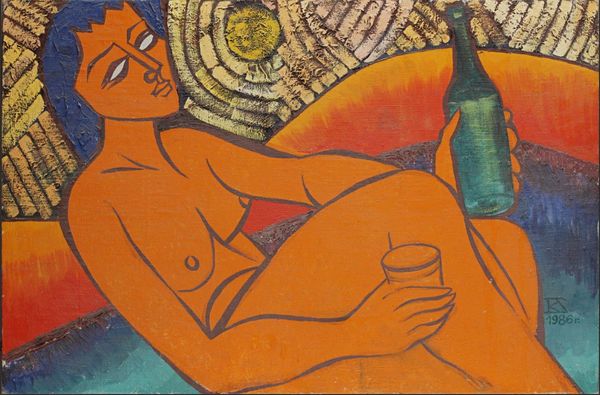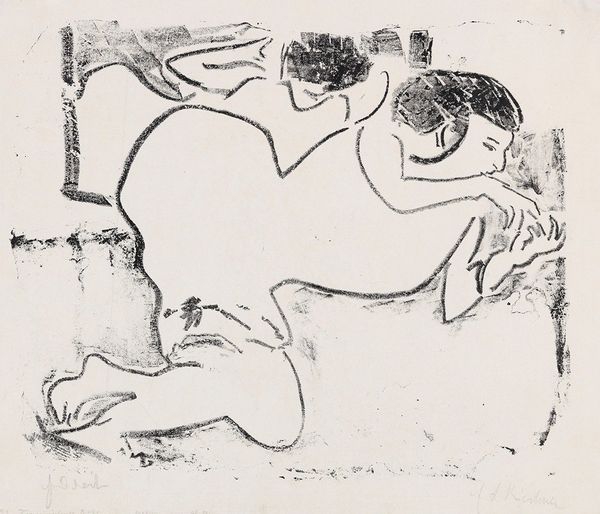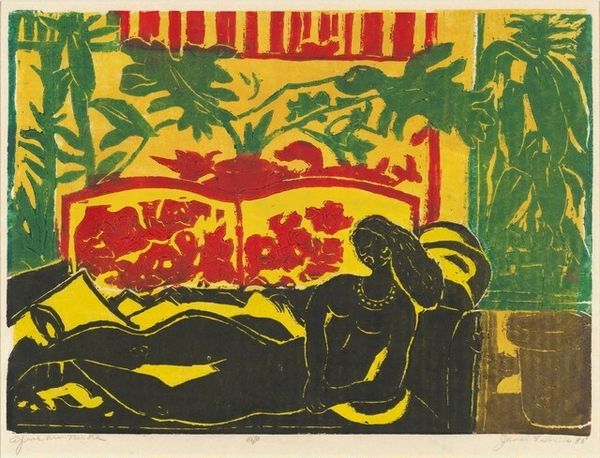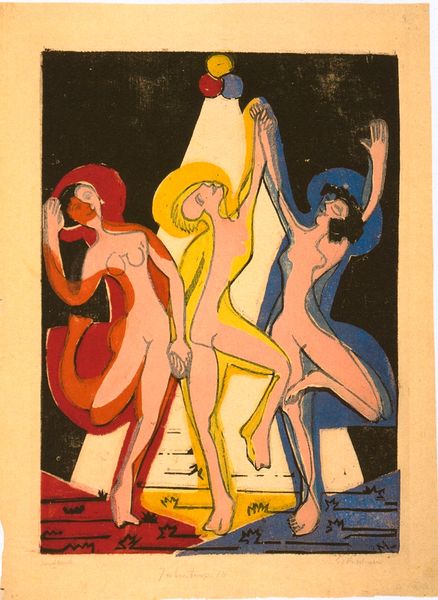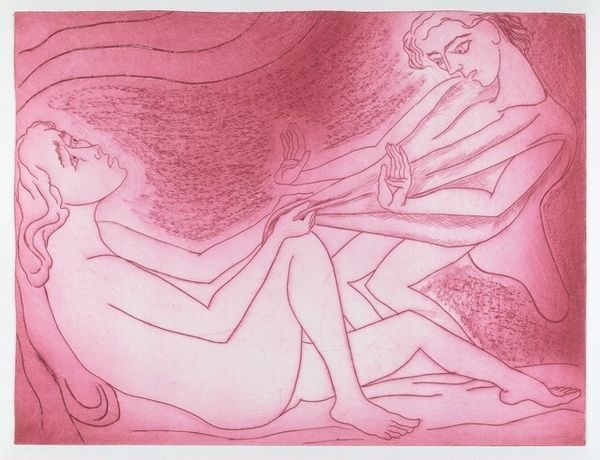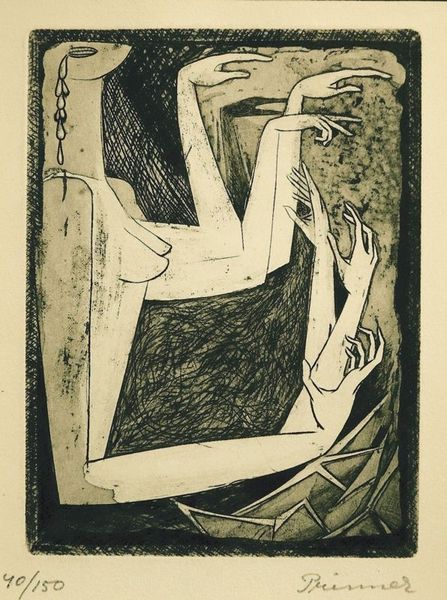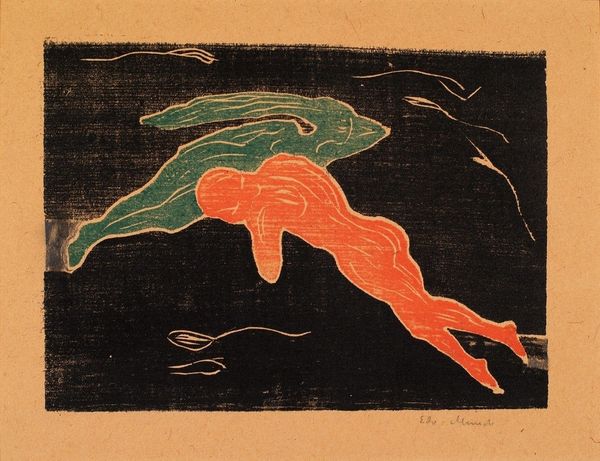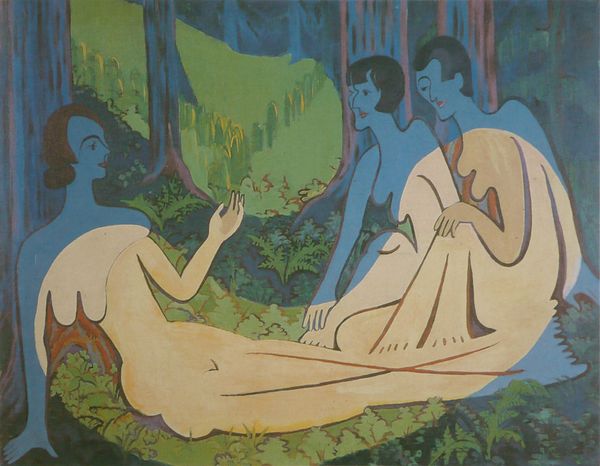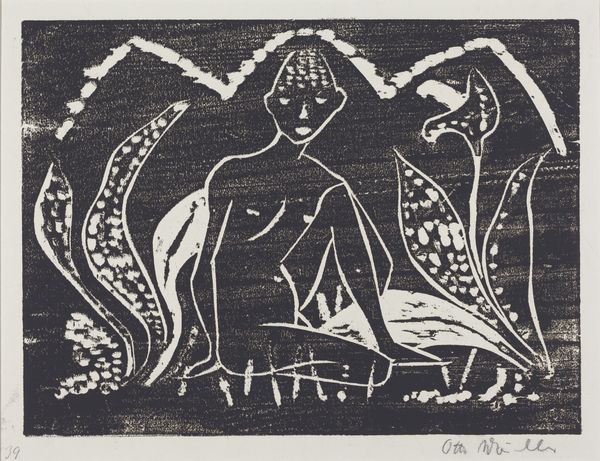
Dimensions: 35.5 x 49.7 cm
Copyright: Public domain
Curator: We’re looking at Ernst Ludwig Kirchner's "Three Nudes in the Forest," a 1933 woodcut print, housed here at the Städel in Frankfurt. Editor: Well, hello, striking yellows! The color just pops. Immediately, I feel the sun beating down, almost a dizzying heat, amidst the shadowed forms surrounding the central figure. Curator: Kirchner was a key figure in German Expressionism. The movement emphasized the artist's inner feelings through bold distortions of form and color, a response against industrialization and societal constraints. Kirchner founded the artist group Die Brücke—The Bridge—in Dresden in 1905, a community united in rebellion against academic tradition. Editor: Yes, there's something deeply vulnerable here. A rawness in the bodies that almost feels uncomfortable but captivating. They seem so exposed yet sheltered within this intensely colored forest dreamscape. Curator: Indeed, there's a potent contrast between the expressive boldness of the colors and the uneasy subject. Kirchner suffered bouts of depression and drug dependency. Themes of alienation and psychological stress marked much of his work, intensified by his experiences during World War I. Editor: Absolutely. I wonder about the figures lurking in the background... they almost feel like specters of the future intruding on a stolen moment. Is it tension? Is it anxiety? Is it simply longing, a desperate clutch at sensuality in a world he sensed slipping away? Curator: Kirchner sought refuge in nature later in his life, settling in the Swiss Alps, although the rise of Nazism deemed his art degenerate, leading to tragic consequences. This print reflects that inward turning and isolation. The nudes are both figures in the landscape and emblems of it. Editor: Art, isn’t it peculiar how it holds sadness and beauty together? You feel everything compressed into this one vivid print. A punch to the gut dressed up in luminous, gorgeous color. Curator: It's a complex dialogue between exterior reality and internal turmoil rendered with those sharp, angular forms characteristic of the Expressionists. It offers a glimpse into both a specific moment and universal anxieties. Editor: I came expecting form; I encountered soul. What begins as observation ends as immersion into another's world. Now that’s a conversation worth having.
Comments
No comments
Be the first to comment and join the conversation on the ultimate creative platform.
